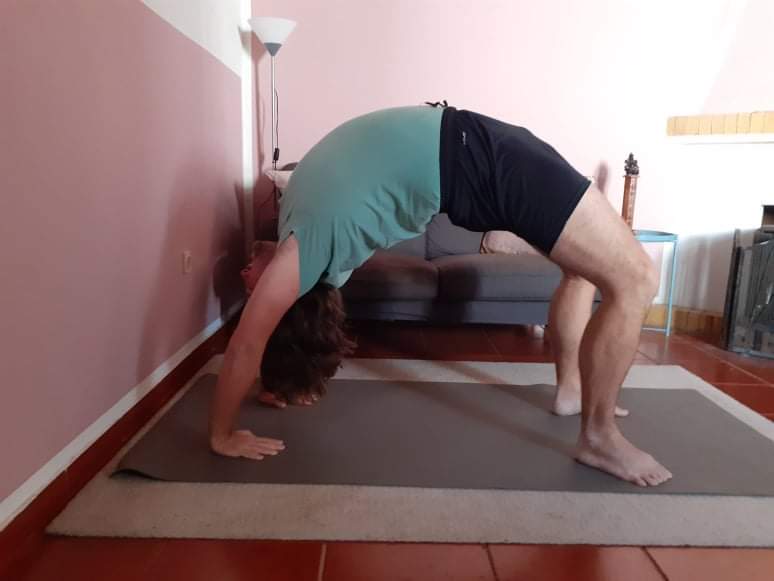I’m often asked about the beauty and discipline of Ashtanga Yoga and its practical implications in everyday life. Ashtanga Yoga isn’t just a sequence of poses; it’s a philosophy and a way of living. It roots itself in a history that dates back thousands of years, originally codified by the sage Patanjali in the Yoga Sutras.
This yoga style intrigues practitioners with its structured approach, defined by an eight-limb path aimed at purifying the body and mind. The eight limbs form a comprehensive framework, encompassing ethical guidelines, physical postures, breath control, and meditation. The ultimate goal? To achieve harmony between body, mind, and spirit, leading to a more mindful and balanced existence.
Engaging in Ashtanga Yoga goes beyond the mat. It encourages a lifestyle punctuated by awareness and discipline, paving the way for enhanced physical health, clearer mental focus, and a sense of peace within the complexities of life. Now, let’s take a closer look at the core characteristics that define Ashtanga Yoga and set it apart from other yoga practices.

The Core Characteristics of Ashtanga Yoga
Ashtanga Yoga stands out in the modern yoga landscape with distinct features that shape its practice. At its core are six series, each more challenging than the last, starting with the Primary Series, which sets the foundation. Progression to subsequent series is based on personal readiness and mastery of the previous one.
Central to the practice is the Tristhana method, which harmonizes three focal points: posture (asana), breathing (pranayama), and gazing point (dristhi). This trinity is pivotal, supporting the development of concentration and inner perception.
The Vinyasa approach in Ashtanga is another key element. It’s not merely about moving from one pose to the next; it’s the art of synchronizing breath with movement to create a seamless flow. This creates a rhythm that heats the body internally, purifying muscles and organs.
A defining feature of Ashtanga Yoga is its commitment to regularity. Practitioners traditionally engage in their sequence six days a week, resting on the seventh. This discipline contributes to deepening the practice both physically and mentally, fostering a transformative process.
These characteristics of Ashtanga Yoga contribute to an intensely focused and meditative practice. In contrast, other forms of yoga, such as Vinyasa, may offer more variability and creative sequences. Understanding these nuances helps practitioners appreciate the unique journey Ashtanga offers.

Ashtanga vs. Vinyasa: Understanding the Distinctive Practices
When you step onto the mat, knowing whether you’re practicing Ashtanga Yoga or Vinyasa can shape your entire experience. Although both Ashtanga and Vinyasa Yoga fall under the umbrella of Hatha Yoga and share a common emphasis on linking breath with movement, each style has distinct attributes that set them apart.
The sequence of Ashtanga Yoga is fixed, with poses performed in the same order every time. This consistency offers a benchmark allowing you to observe progress over time. Vinyasa Yoga, however, is known for its variability. Instructors have the freedom to design their flows, making each class a unique experience.
Pace is another differentiating factor. Ashtanga Yoga sessions have a certain rhythm and are usually more deliberate and structured in flow. Vinyasa classes, on the other hand, can vary widely in pace, often dictated by the teacher’s style and the class’s energy.
Another key difference lies within the learning environment. In a traditional Ashtanga class, students are often guided individually within a group setting, known as Mysore style, which allows for personalized adjustments. In contrast, Vinyasa classes are typically led with synchronized group instruction, which may offer a different sort of energy and community feel.
For those curious about what Ashtanga Yoga is good for and whether it might be more beneficial than Vinyasa, stay tuned for the next section.

Health and Harmony: The Wellness Benefits of Ashtanga Yoga
Ashtanga Yoga offers a comprehensive workout that can foster significant improvements in physical conditioning. This practice targets flexibility, building strength, and enhancing stamina, as individual poses stretch and tone muscles while the flowing sequences increase heart rate.
The practice is also a powerful tool for mental and emotional well-being. Regular participation in Ashtanga Yoga can lead to improved focus, as the synchronization of breath and movement requires concentration. This can help in reducing stress and fostering a disciplined mind.
Further, Ashtanga supports spiritual growth by encouraging self-awareness and inner peace. Through the disciplined practice of the postures and adherence to the Yamas and Niyamas—ethical guidelines of yoga—practitioners often report a sense of personal development that extends beyond the mat.
In addition to these benefits, Ashtanga Yoga can complement other forms of exercise and wellness practices. Its emphasis on breath control and mental clarity can enhance performance in activities requiring concentration and endurance, making it a versatile addition to any fitness or stress-reduction regimen.

Voices of Inspiration: Renowned Ashtanga Yoga Teachers
Ashtanga Yoga isn’t just a physical practice; it’s a tapestry woven through the lives and teachings of its most influential figures. The late Sri K. Pattabhi Jois, affectionately known as Guruji, was instrumental in bringing Ashtanga Yoga to the forefront of the global yoga movement. His dedication to teaching the Ashtanga method has fostered a generation of yogis who carry on his legacy.
But the journey doesn’t stop there. Today, a cadre of skilled Ashtanga yoga teachers continues to enrich the practice with their deep understanding and personal experiences. Names like Sharath Jois, the grandson of Pattabhi Jois, and other teachers like Richard Freeman, Lino Miele, and David Swenson, stand out for their unique contributions and ongoing dedication to this discipline.
Each of these teachers has played a significant role in tailoring the Ashtanga Yoga tradition to the challenges of modern life, while still honoring its roots. They have cultivated vast communities, both locally and online, helping students navigate the intricacies of this vigorous practice.
Engaging with the teachings of these prominent figures can be transformational to your practice. Whether it’s reading their published works, following their online classes, or attending workshops, their expertise is accessible to practitioners across all levels. This connection not only shapes your physical alignment but also deepens your understanding of the philosophical aspects of Ashtanga Yoga.
After drawing inspiration from these renowned teachers, many are compelled to explore the practice further. The next step is IMPLEMENTING WHAT YOU’VE LEARNED into your daily routine. The following section will guide you through embarking on your Ashtanga journey, providing practical advice to ensure a successful and enriching practice.

Embarking on the Ashtanga Journey: Tips for Beginners and Practitioners
Ashtanga yoga is a practice that rewards dedication and patience. If you’re just starting out, remember that respect for your body’s limits is paramount. Find a qualified instructor to guide you through the initial stages, ensuring your technique is on point and your approach is safe.
Seek out a local studio that offers Mysore-style classes, the traditional method of learning Ashtanga yoga, for the best immersive experience. Don’t shy away from utilizing online resources; many seasoned practitioners offer insights and advice through digital platforms.
Be prepared for this to be a lifelong journey. Ashtanga is not a ‘quick fix’ but rather a transformative practice that evolves with you over time. Stay committed, practice consistently, and you will notice not just physical changes, but mental and emotional growth as well.
Above all, recognize that Ashtanga yoga is more than just a form of exercise; it’s a meditative practice that seeks harmony between the body, mind, and spirit. Connecting with the Ashtanga community can provide encouragement and perspective as you progress.



